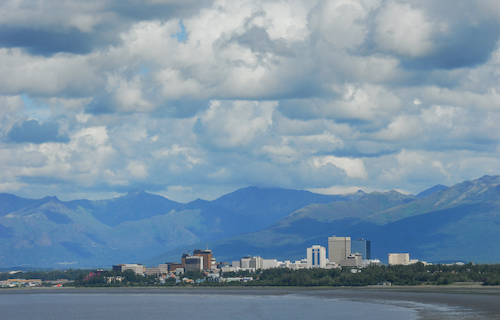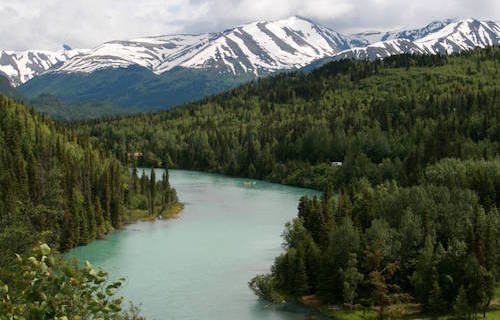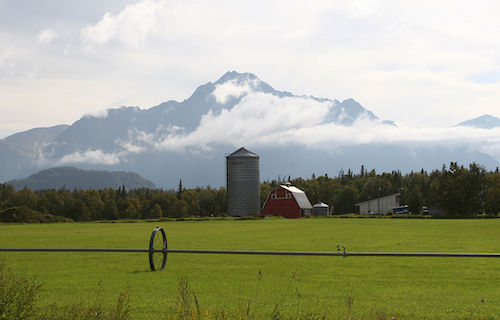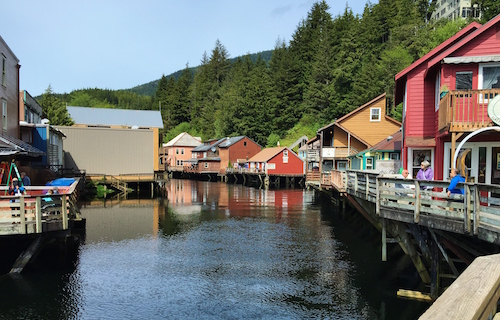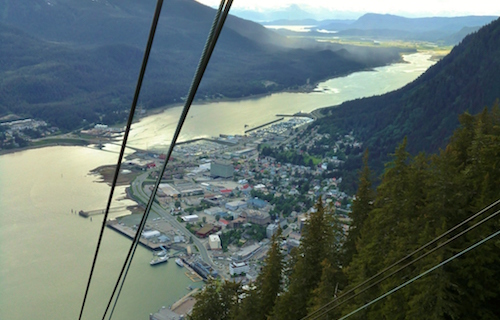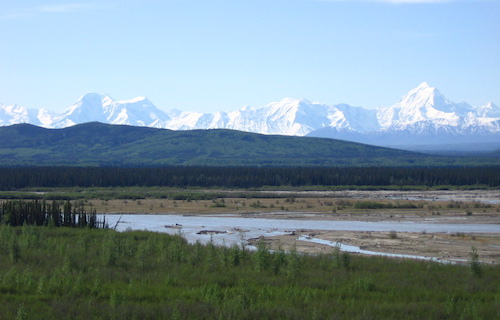Floor Speech: Murkowski Urges Obama Administration to Expand the Role of Nuclear Power
*** As Prepared for Delivery ***
"Mr. President, several years back--actually, it was further than several years, it was in the early 1990s--there was a popular culture sensation in kids' books. The books were entitled, ''Where's Waldo.'' Those with kids probably remember the books. It was a great way to test your kids' eyes and areas of identification. This was crafted by a gentleman by the name of Martin Hansford. You try to find Waldo with his glasses and his red-and-white striped hat. He would be tucked in on the page somewhere, filled with lots of other colors, and you would have to hunt through the page. More often than not, Waldo was tucked in behind similar looking characters who would attract your attention. They played a central role in the overall picture but ultimately were not Waldo. I see the young pages nodding. They have all seen the ''Where's Waldo?'' books.
"I do not want to take time this afternoon talking about the ''Where's Waldo.'' books, but I will tell you I am concerned and the point of my comments today is the concern I have that the Obama administration has engaged in a new game of ''Where's Waldo'' and doing so with our energy policies, only this time instead of ''Where's Waldo'' it is ''Where's Nuclear.'' We will need to search carefully to find where the administration has hidden the resurgence of nuclear energy.
"The confluence of high oil prices this past summer and the desire to reduce harmful greenhouse gas emissions has certainly and justifiably promoted the interest in and development of renewable and alternative forms of energy, from more mature technologies, such as wind and solar, to greater awareness of the potential for geothermal, biomass, ocean tidal energy, along with greater energy efficiency and conservation measures.
"Congress in both the Bush administration and now the Obama administration was active in promoting these fields, in extending the tax breaks, mandating levels of ethanol to be used, updating our energy efficiency standards, and providing for incentives for energy conservation measures.
"We are expecting to tackle a climate change bill at some point this Congress. In what shape or form certainly remains to be seen at this point in time, but we know that we must work to slow and reduce our carbon emissions. There is certainly a role for all of these technologies and increased energy efficiency to play in our energy future. But ultimately, as the new administration lays out its energy policy priorities, I have to ask the question: Where is nuclear?
"In an interview with ''U.S. News & World Report,'' Secretary of Energy Steven Chu says:
'[t]he biggest gains, in terms of decreasing the country's energy bill, the amount of carbon dioxide we put into the atmosphere, and our dependency on foreign oil, will come from energy efficiency and conservation in the next 20 years.'
"Our Energy Secretary, Secretary Chu, has basically said that when it comes to making reductions in emissions, it is going to come from energy efficiency and conservation.
"I am absolutely all for conservation, but, once again, nuclear power, the one energy source that currently provides emissions-free, stable, baseload power, along with large-scale, high-paying job creation across the United States, seems to be missing from the Obama administration's energy plans.
"What is the current state of play when it comes to nuclear? The map behind me indicates where we have nuclear facilities throughout the Nation. The different colors are based on years of operation. The blue triangles are nuclear facilities that have been in operation from between 30 and 39 years. That is the majority of the reactors. We have 52 that have been in operation for about a 40-year period, 42 for a 20 to 29-year period.
"What this map demonstrates quite clearly is not only where in the country our nuclear facilities lie, but the fact that we simply do not have any new nuclear plants that have been ordered in this country since 1978. We have 104 operating nuclear powerplants across the country that are providing right around 20 percent of our electric power and approximately 75 percent of our carbon-free power.
"Again, no new nuclear plants have been ordered in this country since 1978. But we have seen a resurgence of interest that has led to license applications for 26 new reactors at 17 sites. These applications have all been docketed by the Nuclear Regulatory Commission with construction on the first plant expected to begin in the year 2012. This is a very welcome revival. This comes at a time when we know our economy is suffering.
"At a recent Senate Energy and Natural Resources hearing, the president and CEO of the Nuclear Energy Institute, Mr. Marvin Fertel, noted that to date, investment in new nuclear energy plants over the past 2 to 3 years has created 15,000 jobs. If all 26 new reactors currently in the licensing process are built, that would result in an annual average of over 100,000 new jobs, according to a recent study by Oxford Economics. Over 20,000 long-term jobs would be generated to operate those plants. Those new jobs would allow nuclear energy to continue to make the contribution that it does today as our energy needs grow.
"We know that nuclear plants also play a key role in reducing our carbon emissions and meeting our climate change goals, while also helping to mitigate economic harm. In 2007 alone, nuclear power resulted in the avoidance of almost 700 million metric tons of carbon emissions.
"How much is 700 million metric tons of carbon emissions? It is more carbon than Canada collectively emits each year. It is roughly twice the amount of carbon emitted by all privately owned vehicles in the United States on an annual basis. It is safe to say that nuclear power avoids a significant amount of carbon emissions, and it brings our expenses down as well.
"An EIA analysis of last year's Lieberman-Warner climate change legislation showed that a new nuclear plant construction would reduce carbon prices in 2030 by 33 percent, residential electricity prices by 20 percent, and residential natural gas prices by 19 percent compared to a scenario where new nuclear construction is limited.
"Not only is nuclear emission free, nuclear also provides a constant reliable source of baseload power. This is an issue we hear time and again in the Energy Committee, an issue that renewable and alternative energy sources, as much as we like them, struggle with this reality of reliable baseload. After all, we certainly know, regardless what part of the country you are from, the Sun does not always shine, and the wind does not always blow. On the other hand, in 2008, the average operating capacity for the 104 nuclear plants in the United States was over 90 percent--well above that of coal-fired power generation.
"If we look at the chart, in terms of the capacity factor and what nuclear can provide on a sustainable, reliable basis, we have nuclear and then coal coming in a good second. But as we look to wind, hydro, solar, even oil and gas, if what we are looking for is a level of reliability, the answer is nuclear. It is the type of dependable power that our utilities need to operate efficiently and effectively.
"This year's Gallup Environmental poll shows 59 percent of Americans support the use of nuclear power, which is a new high, but support for nuclear is nothing new in the international community. Since 1978, when the last nuclear reactor was ordered in the United States, over 250 new reactors were constructed overseas. Japan intends to increase the amount of electricity it gets from nuclear from where they are today at 30 percent to over 40 percent by the year 2020. France already gets 75 percent of its electricity from nuclear.
"I think the American people get it and the international community certainly gets it. Nuclear power is a broadly accepted form of safe energy, and it is time that we in Washington understood this as well.
"It is clear that nuclear provides good-paying jobs at home, reduces our carbon emissions, provides reliable baseload power, and it is supported by the American people. So what is not clear is where the new administration is on nuclear. While there has been some mention of nuclear energy being part of the overall energy strategy, the actions of the administration do not support the claim.
"So far, the administration has sought to kill Yucca Mountain as a long-term repository for spent fuel. They have shown an unwillingness to increase the loan guarantee program and the funding levels to support construction of new nuclear plants, and they have focused on renewable and alternative fuel developments to reduce our carbon emissions without any mention of nuclear energy. So where nuclear energy truly stands with the current administration is a bit of a mystery to me. Let's talk about Yucca Mountain.
"The administration seems to view Yucca Mountain in the same vein as the Guantanamo Bay prison. Both are politically uncomfortable solutions to a toxic problem, and they are going to be shut down, never mind that we do not have an alternative plan for either one of them. So what are we going to do with the thousands of tons of spent nuclear fuel and defense-related, high-level waste that is spread out all across the country?
"That map we saw earlier with all of those dots all across the country is where we are keeping the nuclear waste. It is sitting right there spread out across this country.
"How many tens of billions of dollars in liability will the American taxpayers be on the hook for when the administration finally abandons all hope of fulfilling the Nuclear Waste Policy Act's already well past 1998 deadline for a permanent repository?
"Billions of dollars have been spent over the last 25 years in characterization and engineering development for the Yucca Mountain license. It is hard to imagine a better understood piece of real estate on the planet. Onsite dry cask storage is a safe but a temporary solution, and it does not remove the need for a permanent repository.
"In the meantime, the nuclear industry faces uncertainty regarding spent fuel liabilities, States have no permanent disposition path for defense-related waste, and the Federal Government cannot address tens of billions of dollars in taxpayer liabilities.
"So far the alternative plan seems to be to leave the waste at its current location, and we will talk about it.
"I mentioned the Loan Guarantee Program. The administration seems to be just as confused about its support for the new reactor construction needed to maintain nuclear energy's current contribution. As part of the 2005 Energy Policy Act, Congress created the Loan Guarantee Program to help us develop the 21st century energy system our country needs.
"The Loan Guarantee Program provides support for a broad portfolio of clean energy technologies, from energy efficiency and renewable energy systems to pollution control and vehicle technology used to advance nuclear and carbon capture projects. It is a widely popular program. Despite the current limitation of $42 billion for the program, the Department of Energy has received applications for over $120 billion in new projects.
"Of the $42 billion for the overall program, $18.5 billion was made available for the new nuclear technology. Over $93 billion in support has been requested. Mr. President, $18.5 billion has been made available for the new nuclear technology, but $93 billion has been requested. It is oversubscribed by a factor of five.
"We can see on this chart that $93 billion has been requested; $18.5 billion available. The others--the renewable, nuclear, fossil, mix--when you look at what we had intended with the Loan Guarantee Program and how we envisioned that would move forward, I think we can clearly underestimate where that support would be for the nuclear programs.
"It is important to note that the Loan Guarantee Program is also entirely self-funded and does not represent a handout to the industry and does not expose the taxpayer to default risks. The total loan volume for the program is established by the Appropriations Committee, but any potential defaults are covered by fees paid by the applicants, not by the taxpayer. So the industry does get the help, the assistance--that backstop, if you will--of the loan guarantee from the Federal Government, but they pay for it. That seems reasonable.
"During debate on the stimulus bill, there was a $50 billion increase in the size of the Loan Guarantee Program that was sought. Again, this is a $42 billion program with $120 billion in application requests. But increasing the size of the program authority was shot down several months back because of fears that construction of new nuclear plants would take up the bulk of the loan guarantee authority. So where was the administration's support for the Loan Guarantee Program during this debate? This program helps all forms of clean energy technologies, but this increase was denied because nuclear was in the mix.
"For 10 years now, we have consistently heard about the urgency of global climate change and the need to address it. I agree. There is clearly evidence of climate change. I see the real-life impacts in my State of Alaska. But I do find it more than a little bit inconsistent that the same entities that would press for immediate action would deny nuclear a role in the solution.
"Perhaps the current administration thinks global climate change isn't as important as developing a centrally planned electrical system based on renewable energy that the administration believes is in the best interest of the public. Renewable energy sources will be important and deserve solid support, but, as you can see from this chart--and I apologize because it is very busy--we could double the amount of electricity produced by renewable resources and it still wouldn't equal what we currently receive from nuclear power.
"So if you look at our nuclear electric power, 100 percent of nuclear power goes to generation of electricity; 21 percent of the sector creates our electric power here. Looking up to renewable energy and how it feeds into consumption, whether it is transportation, industrial, residential and commercial, or electric, if we were to increase--double--our renewable energy, again we still don't come close to what we are able to provide currently with nuclear.
"So going back to the issue of climate change, I believe it is important to ask the question as to whether this issue of climate change can really wait for renewables to develop to such a scale that they will become the primary source of energy. The point I wish to leave folks with is that we need to be advancing all technologies equitably.
"Nuclear energy is the most robust form of nonemitting base load power we have available to us, bar none. Over the last 20 years, the industry has demonstrated its ability to operate these reactors efficiently and safely to the great benefit of our country.
"Mr. President, I mentioned it earlier. The rest of the world gets it, the American public gets it, but where is the administration on nuclear? The time to demonstrate our resolve for new nuclear energy development is now. We as a nation cannot afford additional delay if we are truly serious about how we reduce our carbon emissions while maintaining access to affordable energy.
"It is time for the administration to come forward with its plan for the inclusion of nuclear power in its overall energy policy and what it intends to do with existing and future spent nuclear fuel. We shouldn't be left standing here asking: Where is nuclear?
"Mr. President, I yield the floor."
# # #

